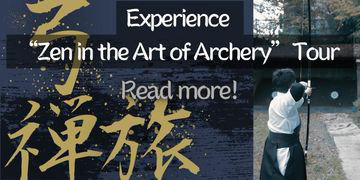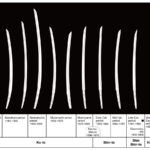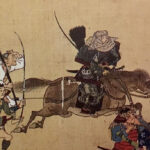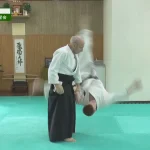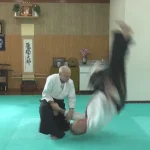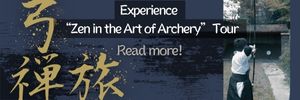Budo library: “The Secrets of Itto-ryu” and “Unravelling the Cords” in English
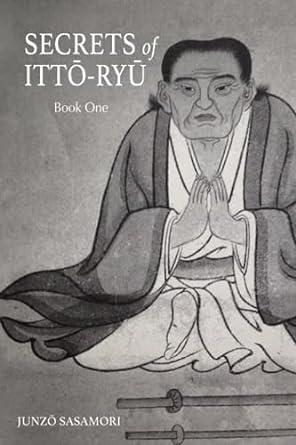
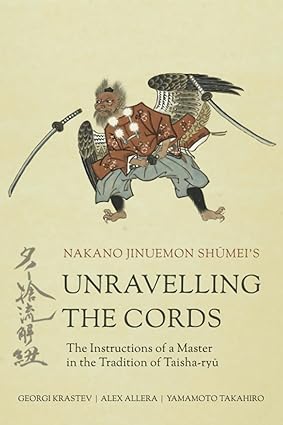
Bunbu, the balance between martial arts and literary arts, has been one of the ideals of Japanese martial arts for centuries and it is as important today as it was in the Muromachi Period when feudal lords compiled the kakun, the house codes their samurai should live by. It, however, creates an inequality between Japanese practitioners and their counterparts abroad, especially those who cannot read Japanese: the former have access to an enormous corpus of sources whereas the latter have to settle for a few titles with less than a dozen being original Japanese works. In every koryu practitioner’s library you will find Miyamoto Musashi’s “Gorin no Sho”, Yagyu Munenori’s “Heiho Kadensho”, Takuan Shoho’s “Fudochi Shimmyo Roku”, Issai Chozanshi’s “Tengu Geijutsuron” and Yamamoto Tsunetomo’s “Hagakure” but little beyond these and this certainly leaves a big gap in their education and development.
A fortuitous coincidence
And suddenly, and without it having been planned, last year we saw not one but two new publications along these lines appearing in the market: “The Secrets of Ittō-ryū: Book One” (Alkaid Research LLC, 2023/2/1) and “Unravelling the Cords: The Instructions of a Master in the Tradition of Taisha-ryu” (Purple Cloud Press, 2023/8/26) –the first one, is the first part of a translation of “Itto-ryu Gokui” (Itto-ryu Gokui Publications Society, 1965) authored by Junzo Sasamori, Ono-ha Itto-ryu’s (OHIR) 16th soke presenting Itto-ryu’s history, formation and dissemination in Japan from the time of its founding by Ito Ittosai Kageisha in the late 1550s until the mid-20th century and the second a more complicated volume with an annotated translation of “Taisha-ryu Kaichu”, a 1710 text by Hyoho Taisha-ryu (HTR) master Nakano Jinuemon Shumei, chief retainer to the lord Nabeshima Mitsushige as its center but with some very important extras including “Shinkage-ryu Sonten no Kinsei” by Taisha-ryu founder, Marume Kurando with original text by his teacher and founder of Shinkage-ryu, Kamiizumi Nobutsuna and about two hundred pages of original material putting the two original texts in historical, cultural and even geographical context.
The texts themselves would be important enough to grant a presentation in “Hidden”; what makes them even more noteworthy and in fact unique among all other translations of original texts so far is that both have been translated and edited by practitioners of the respective arts. In the case of “The Secrets of Ittō-ryū”, the translator is Mark Hague, a practitioner of OHIR who studied in Japan (2002-2022) under 17th soke Takemi Sasamori and under 18th soke Yuji Yabuki and holder of Kanajisho Menkyo, and in the case of “Unravelling the Cords” the translators are Messrs Alex Allera, a practitioner of HTR since 2014, Shihandai, and leader of the school outside Japan, Georgi Krastev, practitioner since 2017 and with Mr. Allera a researcher in the Taisha-ryu Historical Research Group as well as a figure well-known to the koryu world, Shihan Takahiro Yamamoto, a student of the 13th soke of HTR, Takenori Yamakita, holder of Menkyo Kaiden and by all accounts the key factor for the school’s proliferation in Japan and abroad the last decade.
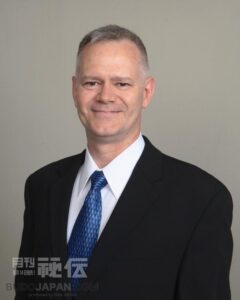
Mark Hague

Takahiro Yamamoto
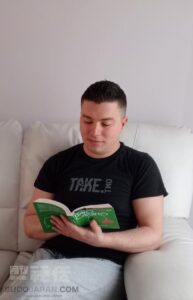
Alex Allera
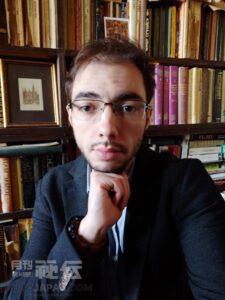
Georgi Krastev
Personally speaking
Before getting into the books themselves and listening what their translators have to say about them though, I would like to get some personal stuff out of the way: in the case of “Secrets”, other than having a direct interest in the book because as a member of OHIR since 2016 I am consulting it almost on a daily basis, Mark Hague has been a good friend and a gracious and supportive sempai for five years and he was also kind enough to allow me to preview the translations, offer some minor suggestions some of which even managed to reach the published edition and also to provide a blurb for the back cover. My relationship with “Unravelling” is nowhere that close but Yamamoto Shihan was extremely helpful when I did the experience article “Hyoho Taisha-ryu: The best under heaven in the West” back in 2015 and I have been admiring his work since; furthermore, the representative of HTR in Greece, Vangelis Kalakonas, is a close friend who has seen me through some incredibly hard times and to whom I owe a debt I don’t believe I will ever be able to repay. And finally, being a professional translator of over 50 books (most of them about martial arts including those by Musashi, Yagyu and Takuan) I am always fascinated by them!

“Secrets of Ittō-ryū” back cover

Mark Hague and Takemi Sasamori, 17th soke of Ono-ha Itto-ryu
That being said, I want to say upfront that here I am dealing with these two books solely from the vantage point of someone interested in koryu budo: I am not an academic to judge how correct are the assumptions of Messrs Allera and Krastev in some of their analyses contained in “Unraveling” and I didn’t spend the years Mark Hague did with Takemi Sasamori analyzing the minutiae of “Secrets”. Furthermore, and while these are books written for the practitioners of the respective traditions, there is a broader public to which they might appeal, consisting of practitioners of other traditions who want to see how OHIR and HTR deal with the same issues, people interested in joining a school who want to get a better understanding of these schools’ attitudes and philosophy, people interested in Japanese history in general or martial history in particular etc. Therefore for me, and for the scope of this article, this is just a presentation of two books that came out at the same time, are important for their respective schools, have been translated by practitioners of said schools, have been supported by the heads of the respective schools (both Uehara Eriko soke of HTR and Yabuki Yuji soke of OHIR have written endorsing introductions to the books) and come at a time when the koryu are in the most cosmopolitan phase they have ever been. In that sense, their value is enormous anyway!

Mark Hague (Ono-ha Itto-ryu Kanajisho Menkyo) with Yabuki Yuji, 18th soke of Ono-ha Itto-ryu (Picture: © Franz Häusler)
From the translators: the whys and the hows

Junzo Sasamori’s “Itto-ryu Gokui”
So how was it that the translators decided to translate and publish these particular books? In the case of “Secrets”, when Mark Hague started practicing OHIR in Tokyo he saw people reading from it, using it to settle disputes and referencing it so he bought it and started translating the kata section to better understand what he was practicing –sort of like a personal notebook. With time he expanded to the licenses and kuden (oral teachings) sections and finally to the school’s history which is basically the contents of the first volume. As for publishing it, it is first and foremost for the sake of present and future OHIR practitioners and secondly for students of kendo, aikido and Daito-ryu, lessons of which come directly or indirectly from OHIR. In the case of “Unraveling” the translators initially wanted to publish a more generic presentation of HTR, one that would include both some original texts and some practical descriptions of the school as practiced today. “Kaichu” was a unique and profoundly insightful albeit unknown text of HTR so they decided to use that and as they worked on it, realized its importance for martial philosophy and decided to make it the main focus of their publication.

“Taisha-ryu Kaichu”, the 1710 text by Hyoho Taisha-ryu master Nakano Jinuemon Shumei
What is it that makes the books important? Regarding “Unraveling”, although there were many different lines of HTR and many have left a substantial documentary legacy, “Kaichu” is a very long document with the unique purpose of preserving the teachings of the school which had begun to be forgotten in Hizen Province at the time of its writing. As for “Secrets”, it is, as Mark Hague puts it, the “Bible” of OHIR in five sections that present in detail the school’s history, from its founding to Junzo Sasamori, source material from the archives of the families that preserved it, a comprehensive overview of all the kata with detailed explanations, the author’s thoughts on kendo (Junzo Sasamori was an 8th dan), the scrolls of transmission with detailed analysis of the meaning of the lessons and a section with kuden that he learned from his teachers and which go even deeper in esoteric teachings expounded in previous sections. Overall, it is a complete guide to OHIR.
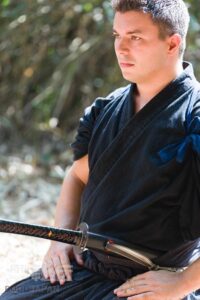
Alex Allera, Hyoho Taisha-ryu Shihandai
Regarding the audience, the primary target for “Secrets” is of course practitioners of OHIR but on a second level, practitioners of kendo, aikido, Daito-ryu and related martial arts as well as martial arts historians will find “Secrets” of interest; according to Mark Hague, Junzo Sasamori wrote the book to be accessible to the general public, not cultural specialists, academics, Japanologists etc. so he tried to maintain the same spirit in the translation. In the case of “Unraveling”, the translators initially wanted to present something to the general public but in the process realized that that would be impossible: just a translation in the vein of “Gorin no Sho” or “Heiho Kadensho” without the explanations and background necessary to understand the original texts would put the work out of philosophical and historical context so they decided to add the necessary material staying true to the intention of Nakano Shumei. (For what it’s worth, I believe that this material is exactly what makes the book more approachable to a broader audience!)

Georgi Krastev, Hyoho Taisha-ryu
Working on texts like these is challenging so I thought I’d ask Messrs Allera and Krastev and Mark Hague what were the challenges they faced. In the former’s words, the text is awfully dense at times because its author, was exceptionally educated in Chinese martial texts, history and literature, as well as Japanese poetry, literature and the Rinzai Zen Buddhist canon. This means that he freely uses and mixes concepts and ideas from these sources with the terminology and philosophy of HTR, so often what is written can be read at two or three different levels of understanding; this means that the translation of certain terms becomes practically impossible because the allusions would be lost so annotations become that more important. That aside, the archaic language and the use of kanbun characters further complicated things so they had to consult other experts on things like Chinese philosophy.
The problems for Mark Hague in “Secrets” were similar: as he says himself, Sasamori Junzo was born in 1886, and his writing style reflected an earlier era. He was also well educated in both Japan and the West, having received both a Master’s Degree and Doctorate of Philosophy from the University of Denver in the U.S. so in his writing, he draws from a variety of sources from both Eastern and Western philosophy and culture. It is not uncommon to see references to Confucius, Buddhism, and Taoism in the same paragraph as quotes from the Bible, Plato, or Ralph Waldo Emerson; of course, these are all in the context of OHIR with its own, unique terminology. As an academic, he also tended to write in very long sentences, which was the academic style during his era so even well-educated Japanese people have a hard time deciphering what he wrote.
Regarding the feedback, it has been positive for both books and as for the future, Mark Hague will of course move on to the remaining four sections of “Secrets of Itto-ryu” (as a matter of fact, the next one, presenting the transmission scrolls and therefore the essence of the school is being in the final stages of production as of this writing) and Mr. Krastev and Mr. Allera are considering “Tendo”, one more treatise from another HTR line from Hizen Province, perhaps a historically accurate biography of Marume Kurando and are now gathering materials for a book on their line of the school, the Oda line lead by Uehara soke.

Uehara Eriko soke and Yamamoto Takahiro Shihan of Hyoho Taisha-ryu
A verdict –and a recommendation
You wouldn’t be reading this unless you wanted to hear my take on the books and that can be summarized in the phrase “I believe they shouldn’t be missing from any classical Japanese martial arts library”. They offer unique insights to the workings of two important swordsmanship traditions that are still very much alive and well in Japan and expanding to the rest of the world while at the same time, help us understand the way of thinking of Japan’s early modern period warriors and the cultural milieu that created it; in that sense, they are invaluable for anyone interested in this aspect of Japan’s culture.
Furthermore, they set a new standard for classical martial arts’ books. The translators’ inside knowledge of their respective schools allows them to research the sources for their texts more thoroughly and use the results of this research to create around the original texts a framework that will help the reader follow the authors’ line of thought. Especially in the case of “Unraveling”, this framework goes beyond the copious footnotes and is essentially a second book that is actually bigger than the original (pp. 201-446) and works as a companion to it; to the best of my knowledge, this hasn’t been done before in the field of classical martial arts’ books and for that alone, we should be thankful to the HTR team. (In the case of “Secrets”, Mark Hague’s introduction on the life of Junzo Sasamori, his extensive endnotes and the glossary in the back of the book offer the reader a context for better appreciating the book.)
Koryu budo is a subculture inside another subculture so as practitioners of these traditions, we have made peace with the idea that publications related to them will always be scarce. Having two such publications in the same year is upon itself a major event; that they would be of texts this important and that their production would be of this level goes beyond “major” and borders on “unheard of”. However, I believe that this might be the beginning of a new era: there’s a whole generation of non-Japanese koryu practitioners who have extensive knowledge of Japanese culture, impeccable language skills and a real will to promote their schools to the world and at the same time, a corresponding generation of Japanese teachers and headmasters that are willing to not only allow them but actively help them do it. If I’m not wrong, there’s a good chance this article will become the first of a series and, who knows, perhaps even a column!
 About the author
About the author
Grigoris Miliaresis has been practicing Japanese martial arts since 1986. He has dan grades in judo, aikido and iaido and has translated in Greek over 30 martial arts’ books including Jigoro Kano’s “Kodokan Judo”, Yagyu Munenori’s “The Life-Giving Sword”, Miyamoto Musashi’s “Book of Five Rings”, Takuan Shoho’s “The Unfettered Mind” and Donn Draeger’s “Martial Arts and Ways of Japan” trilogy. Since 2007 his practice has been exclusively in classic schools: Tenshin Buko-ryu Heiho under Ellis Amdur in Greece and Kent Sorensen in Japan and, since 2016, Ono-ha Itto-ryu under 17th headmaster Sasamori Takemi and 18th headmaster Yabuki Yuji.
http://about.me/grigorismiliaresis

